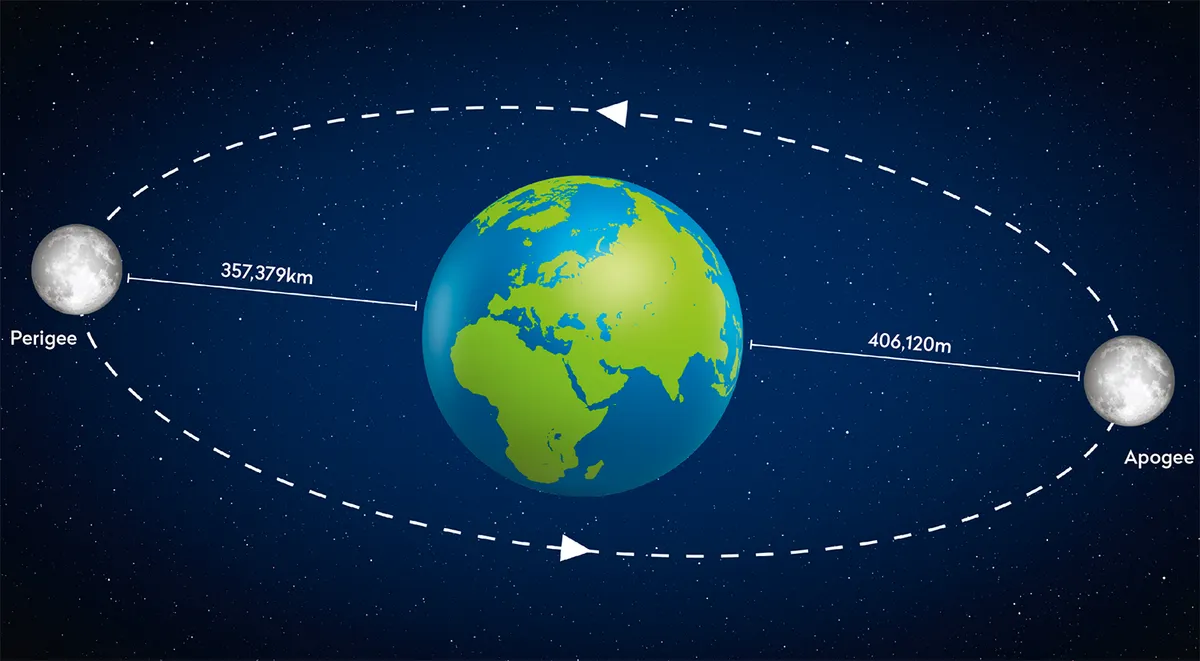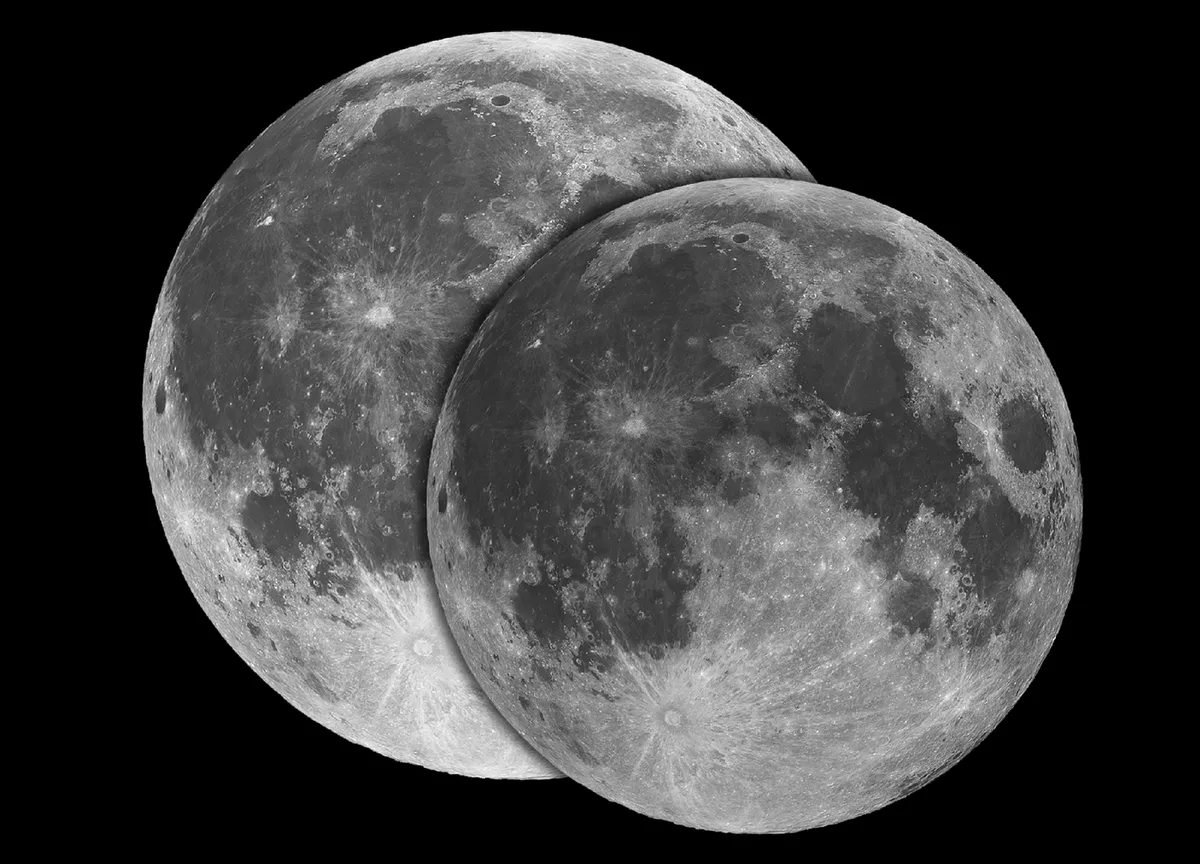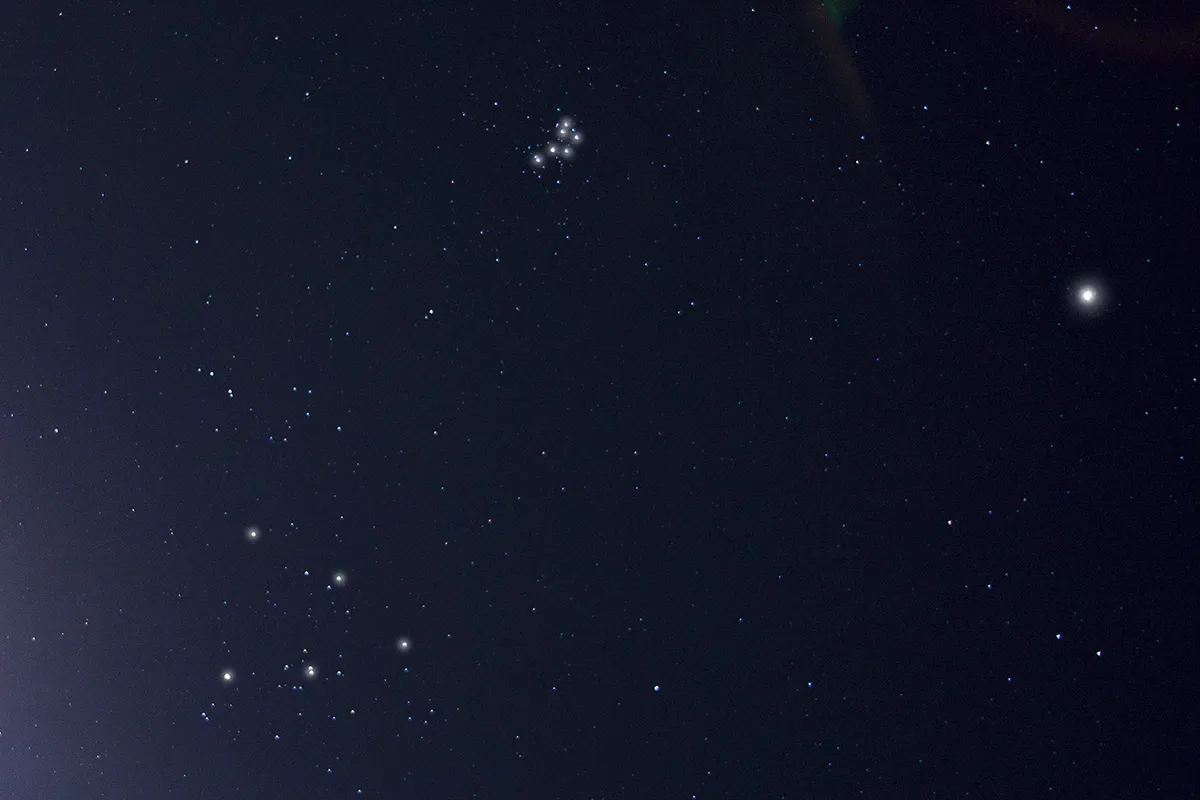Full Moon fans are in for a treat over the next three months, because the run-up to the end of 2025 will see three consecutive supermoons rise in the evening sky.
Here we'll explore exactly what a supermoon is, what makes them special (and not), plus dates and timings so you can see every single one.
For weekly stargazing advice, including moonrise and set times, sign up to the BBC Sky at Night Magazine e-newsletter.
2025 supermoons
The three supermoons in 2025 are the full Moons in October, November and December.
'Supermoon' is a term used to describe when the Moon is both full, and at – or near – the closest point in its orbit to Earth.
As well as this, each monthly full Moon throughout the year has acquired a number of informal nicknames over the centuries, which describe what's occurring in nature during the month in question.
Historically, these full Moon nicknames were a way for our ancestors to mark specific times of year, by naming them after annual rituals or seasonal changes.

Each of the times given below are rough guides: the exact time the Moon rises will vary depending on your location.
The October 2025 supermoon is the Hunter's Moon, rising on 7th October at around 18:20.
It's so-called because October traditionally would have been the time when hunters were active gathering food in preparation for winter.
The October 2025 full Moon is also the year's Harvest Moon, this referring to the time when moonlight illuminated the fields in the early evening, enabling crops to be gathered.
On 5th November, the second of 2025's supermoons rises at around 15:55, and is also known as the Beaver Moon.
This nickname refers to heightened activity among beavers around November, building dams and stocking up on food before winter
On 4th December, we mark the final full Moon – and third and final supermoon – of 2025, this one rising at 14:48, and known as the Cold Moon.
December marks the oncoming of the coldest, darkest months, so the Cold Moon rising would have been a reminder of the harsh weeks ahead.
In short, here are the dates for the 2025 supermoons:
- Hunter's/Harvest Moon – 7th October
- Beaver Moon – 5th November
- Cold Moon – 4th December
Now let's take a look at why these full Moons are supermoons, and what this actually means.

Supermoons explained
Putting the word 'super' in front of anything is immediately going to make it sound like something extraordinary.
In a way, the Moon is already 'super' enough as it is, and perhaps even something we take for granted.
For those of us living in cities, it might even be something we don't always notice.
Perhaps it's too often hidden behind tall buildings, its thinner phases drowned out by clouds and light pollution.
A big, bright full Moon really is a startling sight, and if you manage to see one away from light pollution, it's amazing just how much light it provides.

It's easy to see why the full Moon would have commanded so much attention before the advent of mass artificial lighting.
This is likely why each monthly full Moon has acquired a nickname. Clearly, the full Moon has historically been of major cultural importance.
The Moon's orbit around Earth, and Earth's orbit around the Sun, is what causes the phases of the Moon.
Our Moon is tidally locked with our planet, which means the same side of the Moon always faces Earth.
And throughout the course of a month, sunlight falls on different portions of the Moon, taking it from a thin crescent Moon to a large gibbous Moon and, eventually, a full Moon.

Supermoons occur at full Moon, and they occur when the Moon is closest to Earth in its orbit.
The Moon doesn't orbit Earth in a perfect circle; instead its orbit is elliptical, or slightly egg-shaped.
That means sometimes the Moon is closest to Earth – known as perigee – and sometimes the Moon is farthest from Earth – known as apogee.

As you can see from the diagram above, this means that each full Moon isn't exactly the same distance from Earth.
When the Moon is full and at (or close to) perigee, we call it a perigee Moon.
Another important astronomical term is 'syzygy' (pronounced SIZ-eh-gee), and that means three or more celestial bodies in alignment.
So a full Moon at perigee is a 'perigee syzygy Moon', which is also known as a supermoon.

Supermoons – worth the hype?
So are supermoons really worth all the fuss? It depends who you ask.
Many seasoned practical astronomers will tell you that a supermoon isn't anything to get worked up about.
The difference in size between a supermoon and a 'regular' full Moon the month before or after is imperceptible to the naked eye.
But a photo showing the Moon at perigee versus the Moon at apogee does reveal the difference, as you can see below.

The other disadvantage of a bright full Moon it that its glare washes out the sky, making other celestial objects harder to see.
So if you want to observe a meteor shower or look at planets or deep-sky objects like galaxies through your telescope, you'll probably regard a full Moon as a nuisance.
Yet others love the bright, naked-eye spectacle of a full Moon.
It goes without saying that the full Moon is by far the brightest, easiest thing to see in the night sky. It truly is a mesmerising sight.
And even if a supermoon doesn't really appear any bigger in the sky than a regular full Moon, it's still a great excuse to get out and looking up at the night sky.
It's perfect even for beginners and kids, because it's easy to find, easy to see and immediately spectacular.
For more advice, read our guide on how to make the most of a full Moon or supermoon.
October 2025 supermoon

The October 2025 supermoon rises around 18:20 on 7 October, with the exact time varying depending on your location.
It rises in the east just after sunset and sets in the west just before dawn.
This is the Harvest Moon for 2025, and the Harvest Moon is quite special because, for the evenings around that date, the Moon rises at roughly the same time every night.
That means that, if you head out and watch the Moon rise on 6 October, on 7 October the Moon will rise at roughly the same time, give or take 10 minutes.

The October 2025 supermoon will appear close to the planet Saturn. See if you can spot Saturn to the west (left) of the Moon on the evenings of 6/7 October.
You can even observe Saturn and the Moon in the days leading up to the October supermoon, and see how the Moon's position relative to the planet changes night after night.
November 2025 supermoon

The November 2025 supermoon rises earlier in the evening than the October 2025 supermoon did.
But by November, the evenings will really be drawing in, so it will be effectively nighttime by the time the Moon is above the horizon.
This November supermoon will rise on 5 November in the east around sunset, then set in the west as dawn is breaking.

In the evenings prior, the Moon will again make a close pass near to Saturn in the night sky.
But by 5 November, when the full Moon rises, it will be closer to two beautiful star clusters: the Pleiades and the Hyades.
The Pleiades is a prominent star cluster in the winter night sky, well-known for its beautiful blue stars and surrounding blue glow.
It's a fantastic target to explore with binoculars, and you'll easily see it even through a modest pair.

The Hyades is another famous star cluster, appearing like a sideways 'V' shape punctuated by bright orangey-red star Aldebaran.
Aldebaran is the brightest star in the constellation Taurus, and marks the 'red eye' of the bull.
The November 2025 supermoon being close to these two clusters will make for a beautiful observing – and photographic – opportunity.
As the full Moon climbs higher and midnight approaches, look to the east-southeast and you'll see Jupiter and the constellation Orion climbing above the horizon.
A sign that we're truly approaching the depths of the winter stargazing season.
December 2025 supermoon

The last supermoon of 2025 rises on 4 December in the northeast just before sunset, then sets in the northwest as dawn is breaking.
This supermoon will climb much higher than the previous two, and as it does so, it will be joined by some of the best things you can see in the winter night sky.
The December supermoon will be located just to the west (left) of the Pleaides and Hyades star clusters, about halfway between the two.
And in the east you'll see Jupiter and Orion rising above the eastern horizon.

Orion is one of the best-known winter constellations, and in December is easily seen before midnight.
Jupiter, meanwhile, is forming a neat triangle with Castor and Pollux, the twin stars of Gemini.
And above and to the west (left) of the supermoon, you'll also see Capella, the brightest star in Auriga and one of the brightest stars in the night sky.
This will make for a wonderful evening of stargazing, the supermoon surrounded by some of the most beautiful winter jewels the Northern Hemisphere night sky has to offer.
Share your stargazing adventures and images with us by emailing contactus@skyatnightmagazine.com

